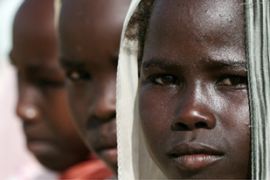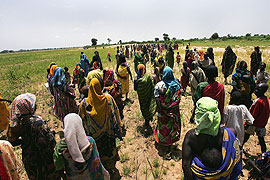Sudan: UN exaggerating Darfur toll
UN says up to 300,000 may have died but admits figure is an educated guess.

|
“This is the only way to raise up funds from donors and charitable communities – by giving them [a] very dramatic picture about the situation in Darfur” Mohamed Ali al-Mardi, Sudan’s former justice minister |
“This is the only way to raise up funds from donors and charitable communities – by giving them [a] very dramatic picture about the situation in Darfur.
Delayed mission
Rodolphe Adada, head of the joint UN and African Union mission, said the troop component of the UNAMID mission was unlikely to be fully operational in Darfur before 2009.
The force “is at less than 40 per cent of its mandated level of 19,555 and it is very unlikely to achieve full operating capability before 2009”, he told the 15-member Security Council.
“We are going to try to speed up the deployment,” he later said. “Maybe we’ll have 80 per cent of the force at the end of the year.”
Adada, a former Congolese foreign minister, also told the council that UNAMID still lacked 24 critical attack and transport helicopters as well as key military engineers and logistical support.
He appealed to the council “to redouble its efforts” to help UNAMID overcome its current logistical and political obstacles.
No peace prospect
Adada also painted a grim picture of prospects for peace between Khartoum and the fragmented Darfur insurgency.
“Unfortunately, it is commonly understood today in Darfur that peace is not all attractive, neither economically, nor politically,” the UNAMID chief said.
Last week, the AU and UN envoys to Darfur wrapped up a visit to Sudan during which they failed to set a date for peace talks between the parties.
Abdalmahmood Abdalhaleem, Sudan‘s UN ambassador, meanwhile denied that Khartoum was dragging its feet on allowing non-African troops to join UNAMID.
 |
| The joint UN-AU peacekeeping force is tasked with protecting civilians [GALLO/GETTY] |
He blamed the United Nations for not considering African troops which he said were perfectly qualified for the Darfur mission.
Western members of the council are pushing for the deployment of 3,600 Egyptian, Ethiopian and Rwandan contingents for UNAMID by June, immediately followed by that of battle-hardened Nepalese and Thai units.
UNAMID is to total 26,000 members, including around 6,000 police, tasked with protecting the civilian population of a region the size of France.
More than two million people in Darfur are also believed to have fled their homes since the conflict broke out in the remote western region in February 2003.
Fighting erupted when ethnic minority rebels took up arms against the Arab-dominated government and state-backed Arab militias, fighting for resources and power in one of the most remote and deprived places on earth.